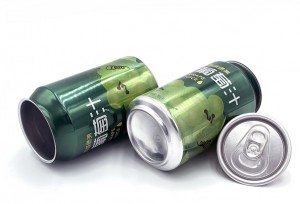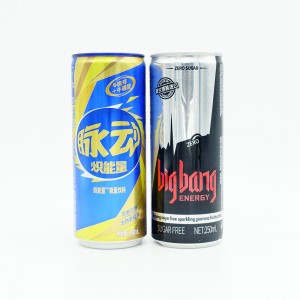Importance of color matching of aluminum cans
In the packaging sector, especially in the beverage industry, aluminum cans have become mainstream due to their light weight, durability and recyclability. However, the color of aluminum cans is often overlooked, but it plays a vital role in branding and consumer perception. The importance of color matching cannot be overemphasized as it directly affects the brand’s image, marketability and consumer engagement.
Color is a powerful tool in marketing and branding. It can evoke emotions, influence perceptions, and even impact purchasing decisions. For beverage companies, the color of the can is more than just an aesthetic choice, it’s an important part of the brand identity. A well-thought-out color scheme can create a strong visual impact and make a product stand out on a crowded shelf. That’s where color matching comes into play. Ensuring that the colors used on the can are consistent and accurately represent the brand is critical to maintaining brand integrity.
One of the main reasons for color matching is to ensure brand recognition. Consumers often associate certain colors with specific brands. For example, the bright red of Coca-Cola or the iconic green of Heineken beer are instantly recognizable. If a brand’s aluminum cans don’t match the established hue, it can cause consumer confusion and weaken the brand image. Consistent color matching helps to strengthen brand loyalty because customers are more likely to choose products they easily recognize.
Additionally, color matching is essential to creating a cohesive product line. Many beverage companies offer a range of products under the same brand name. For example, a company might produce different flavors of soda, each in a different color. However, maintaining a consistent color scheme across all products is essential for brand cohesion. If the colors of aluminum cans vary greatly, it will create a disjointed look that will confuse consumers. Effective color matching ensures that all products are visually consistent, reinforcing the brand’s overall image.
In addition to brand recognition and cohesion, color pairing plays an important role in marketing strategies. The right color can attract attention and entice consumers to buy. Research shows that certain colors can evoke specific emotions; for example, blue is often associated with trust and reliability, while yellow can evoke feelings of happiness and vitality. By carefully selecting and pairing the colors of aluminum cans, companies can capitalize on these psychological associations, strengthen marketing efforts, and drive sales.
Furthermore, the importance of color matching is not limited to aesthetics. It also involves technical considerations, such as ensuring that the colors used on aluminum cans are suitable for printing and production processes. Inconsistent color matching can cause production problems, resulting in cans that do not meet quality standards. This leads to increased costs and wasted resources, so companies must invest in accurate color matching technology.
In summary, can color is a critical aspect of branding and marketing in the beverage industry. It influences brand perception, creates a cohesive product line, enhances marketing strategies, and ensures production quality. As consumers continue to seek visually appealing products, the importance of color will only grow. By prioritizing this aspect in packaging, beverage companies can not only strengthen their brand image, but also cultivate consumer loyalty and drive sales in an increasingly competitive market.
Post time: Nov-12-2024








